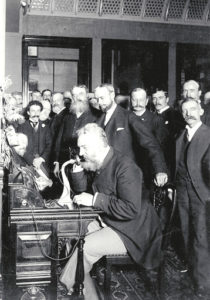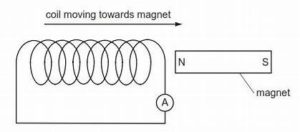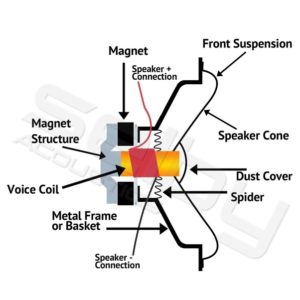1.7 Making Sense of this Experience

Bell’s experiments and our understanding of the telephone principles are perhaps a sideshow to the mainstream of curriculum we see in STEM. We don’t see much in textbooks anymore about the technology or the science of the phone as most have moved into the digital age and do not use the same technology. It is unfortunate as this small piece of the history of science has a wealth of both drama and deep meaning for students in STEM. Even though it is an old story, the progression of Bell learning the STEM disciplines to solve the problem is the same.
When we consider the goals and aims of STEM, the standards are something we should examine. Of particular value in relationship to the NGSS standards https://www.nextgenscience.org/ (Links to an external site.)
Consider the stated standards about energy:
4-PS3-2 Energy (Links to an external site.) Make observations to provide evidence that energy can be transferred from place to place by sound, light, heat, and electric currents. Grade: 3-5
4-PS3-3 Energy (Links to an external site.) Ask questions and predict outcomes about the changes in energy that occur when objects collide. Grade: 3-5
4-PS3-4 Energy (Links to an external site.) Apply scientific ideas to design, test, and refine a device that converts energy from one form to another.* Grade: 3-5
MS-PS3-5 Energy (Links to an external site.) Construct, use, and present arguments to support the claim that when the kinetic energy of an object changes, energy is transferred to or from the object. Grade: Middle School (6-8)
HS-PS2-5 Motion and Stability: Forces and Interactions (Links to an external site.) Plan and conduct an investigation to provide evidence that an electric current can produce a magnetic field and that a changing magnetic field can produce an electric current. Grade: High School (9-12)
HS-PS3-1 Energy (Links to an external site.) Create a computational model to calculate the change in the energy of one component in a system when the change in energy of the other component(s) and energy flows in and out of the system are known. Grade: High School (9-12)
HS-PS3-3 Energy (Links to an external site.) Design, build, and refine a device that works within given constraints to convert one form of energy into another form of energy.* Grade: High School (9-12)
HS-PS3-5 Energy (Links to an external site.) Develop and use a model of two objects interacting through electric or magnetic fields to illustrate the forces between objects and the changes in energy of the objects due to the interaction. Grade: High School (9-12)
Now consider the energy transformations we have examined in this series of explorations. Watch this powerpoint to hone in on the principles here.
So, in the case of transforming any energy into a different form, like the telephone, we lose some to heat or other kinds of energy that what we had expected. (The incandescent light bulb, for example, is more a producer of heat than light. SEE: Light Bulb Heat (Links to an external site.) for an experiment that you can do to calculate the efficiency of an small light bulb.)
Once you have some sense of how energy transformations occur, examine this video:








